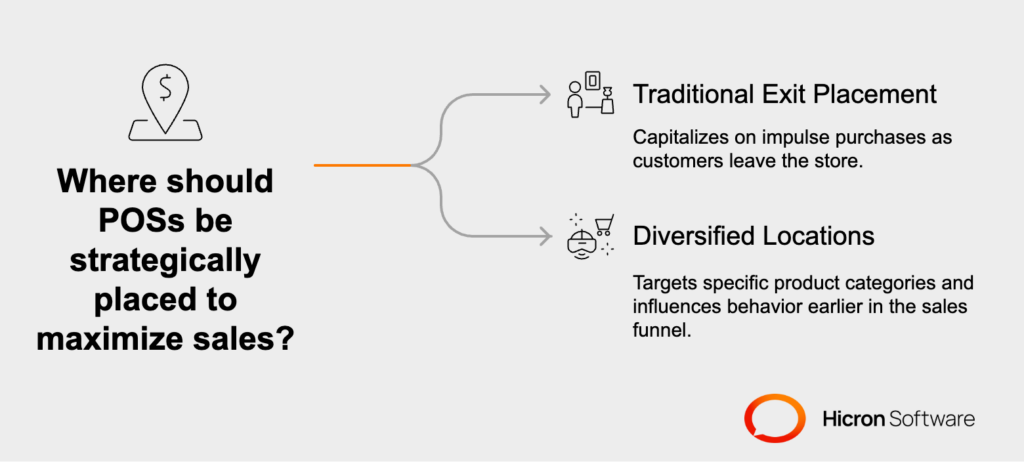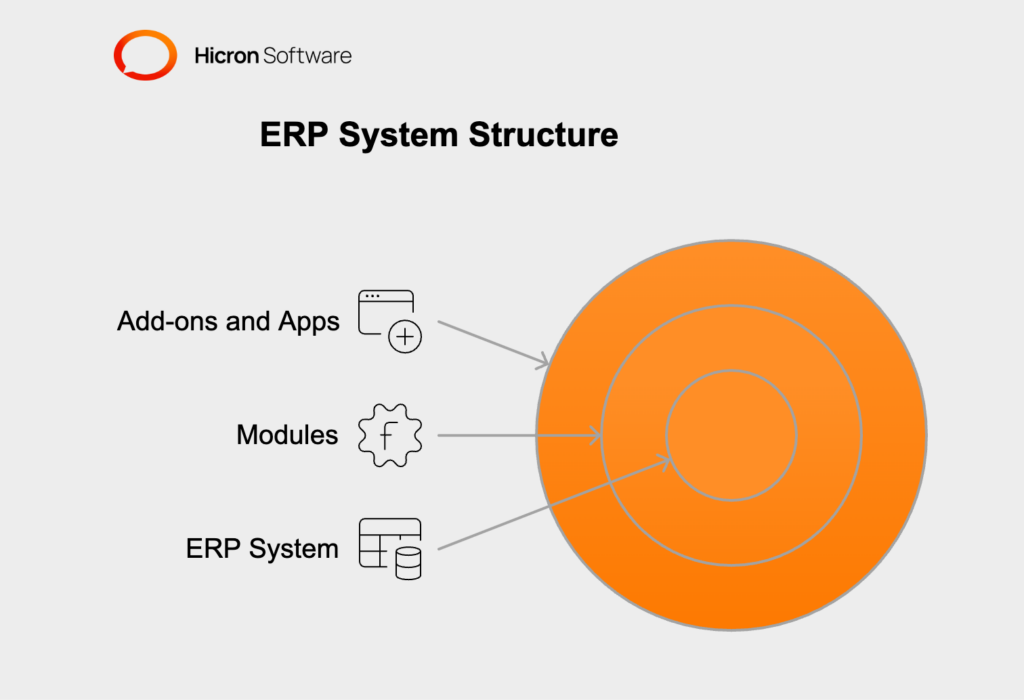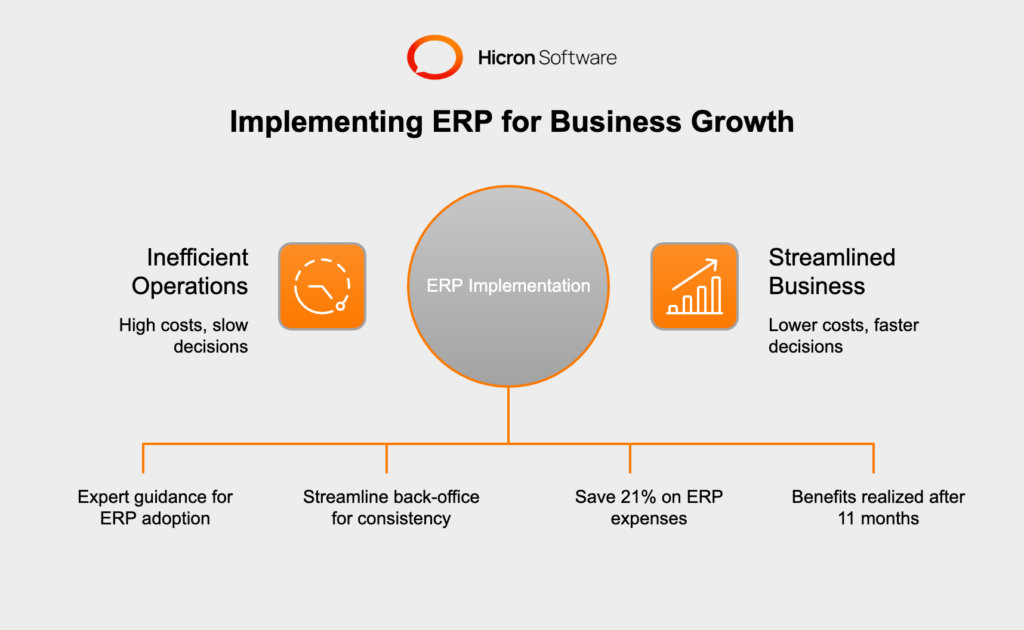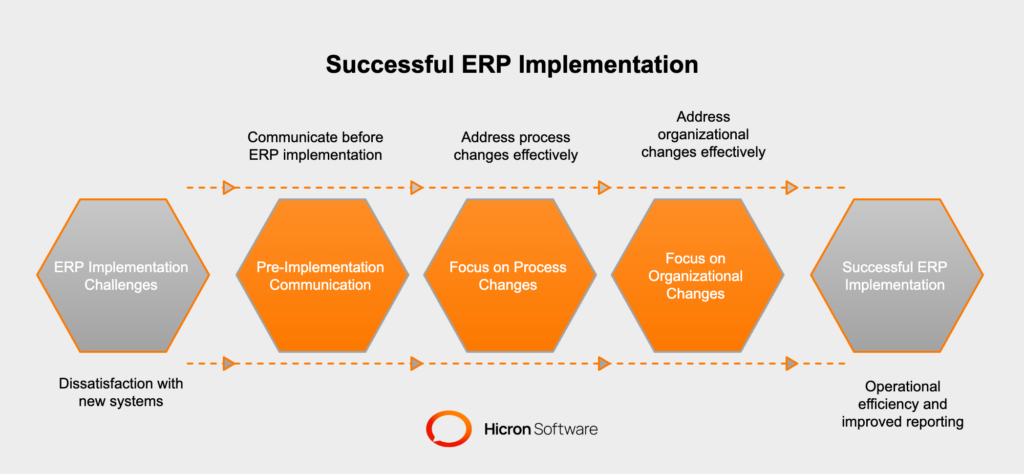How to Use DevOps for Digital Transformation
- April 21
- 4 min

In a competitive business landscape, the integration of Point of Sale (POS) and Enterprise Resource Planning (ERP) systems has become increasingly crucial. By combining the functionalities of these two systems, businesses can streamline their operations and make informed decisions.
In this article, we will explore the benefits, challenges and best practices of adopting POS ERP integration. From small retailers to large enterprises, understanding the power of this integration can help drive growth and efficiency.
A point of sale (POS) system plays a big role in facilitating smooth transactions. Gone are the days of traditional cash registers; technology has ushered in electronic POS terminals with advanced features and capabilities.
Whether in physical stores or online shopping platforms, POS systems act as the central hub for processing payments and managing sales. Retailers can now accept various payment methods like credit cards, debit cards, and mobile wallets, bringing convenience to their customers.
But there’s more to modern POS software than just transaction processing. It empowers retailers to keep track of inventory levels, monitor sales data, and generate insightful reports. By leveraging this data-driven approach, businesses can optimize their operations, streamline inventory management, and enhance customer service.
Marketers recognize the significance of points of sale (POSs) as prime locations where consumers often make purchasing decisions on high-margin products or services. While the traditional approach placed POSs near store exits to capitalize on impulse purchases as customers leave, there is now an opportunity for retailers to strategically position POSs in different locations.

By diversifying POS locations, retailers can leverage micro-marketing strategies to target specific product categories and influence consumer behavior at earlier stages in the sales funnel. This expanded reach provides retailers with more opportunities to engage with customers and drive sales.
Point of sale terminals, or POS terminals/systems, are hardware systems that process card payments at retail locations. These systems act as a payment gateway for businesses, processing payments from in-person transactions.
POS terminals are a technological upgrade from traditional credit card machines. They offer more customization, capabilities, and processing power. For instance, cutting-edge POS terminals like Clover provide powerful hardware to process various payment types and track transaction data for business use.
Enterprise resource planning (ERP) is a powerful software solution that organizations utilize to efficiently manage various business activities. This comprehensive suite covers essential functions like accounting, procurement, project management, risk management, compliance, and supply chain operations. Additionally, ERP includes enterprise performance management software, enabling organizations to plan, budget, predict, and report on their financial outcomes.
Whether deployed on-premises or in the cloud, ERP systems serve as integrated platforms for production-based or distribution businesses. They support key areas such as financial management, human resources, supply chain management, and manufacturing, all while integrating with core accounting functions.
ERP systems offer comprehensive tracking of production, logistics, and financials, providing transparency across the entire business process. Serving as a central hub, these systems streamline workflow and data access for multiple departments. Additionally, ERP solutions cater to businesses of all sizes, offering customizable features to meet specific industry needs.
ERP serves as the central hub of a business, offering integration, automation, and business intelligence crucial for effective and efficient management of end-to-end operations. It acts as a single source of truth, capturing critical data and information that matter to the business. This enables management, budget-holders, decision-makers, stakeholders, and users to access trustworthy, reliable, timely, and accurate data.

ERP is a suite of interconnected business applications form the foundation. These applications work in harmony, exchanging information and utilizing a shared database. Each module within the ERP system serves a specific purpose, addressing distinct business functions while leveraging the same dataset. This cohesive approach ensures that the ERP system caters to the overarching requirements of the company while also accommodating industry-specific demands. To enhance its capabilities further, the ERP suite can be enriched with add-ons and apps that seamlessly integrate with the core functionality.
When it comes to measuring the impact and scale of Enterprise Resource Planning (ERP), numbers tell a compelling story. From market size and revenue figures to adoption rates and usage statistics, the numerical data surrounding ERP provides valuable insights into its significance and widespread implementation. In this article, we will delve into the world of ERP in numbers, exploring key statistics that illuminate the transformative power of this software solution across industries and organizations of all sizes.
Aberdeen Group
According to the Aberdeen Group, a trusted source in industry research, an impressive 65% of small businesses are currently utilizing ERP consulting services. This indicates a widespread recognition of the value and benefits that ERP brings to these businesses.
From 2014 to 2020, small and medium-sized businesses (SMBs) contributed significantly to the overall ERP market with a Compound Annual Growth Rate (CAGR) of 7.9%. The driving force behind this growth is largely attributed to the advantages that ERP applications offer, including the ability to reduce operating costs and minimize inventory waste, as highlighted by a report from Allied Market Research in 2019.
The importance of ERP solutions becomes even more evident when considering that 96% of emerging businesses excelling in their respective industries rely on some form of ERP solution, according to the Aberdeen Group. This statistic underscores the integral role that ERP systems play in supporting the success and growth of SMBs.
Small businesses equipped with ERP systems experience a significant time-saving advantage. They can make decisions 36% faster than those without the solution, as reported by the Aberdeen Group. This enhanced efficiency enables SMBs to respond swiftly to market changes and customer demands, giving them a competitive edge.
When choosing between ERP systems and standalone platforms, SMBs consistently opt for ERP due to its ability to standardize back-office operations by 77%. This streamlines processes and ensures consistency across various departments. Additionally, ERP systems contribute to an 11% reduction in overall operational expenses and provide real-time visibility into critical data and insights, resulting in a 48% improvement in decision-making capabilities.

Notably, small businesses that engage in negotiations with ERP service providers can achieve substantial cost savings. On average, these businesses save 21% of their expenses, as noted by respondents from the SMB market. However, it’s important to keep in mind that it may take approximately 11 months for businesses to fully realize the benefits of ERP implementation, as highlighted by the same respondents. This emphasizes the need for patience and commitment when integrating ERP systems into small businesses.
Gartner
According to Gartner, ERP data is expected to play a significant role in AI-generated predictive analysis, accounting for 30% of all forecasts and analyses within enterprises by 2023. The report also highlights that AI integration into ERP systems is a key focus, with 65% of CIOs predicting its incorporation. Deep learning and predictive analytics are listed as essential ERP technologies to gain a competitive edge. Gartner reveals that ERP has become a top tech investment priority for finance companies, with 64% of firms planning to implement it within the next three years.
Panorama Consulting
According to a study by Panorama Consulting, businesses are actively planning to replace their older systems, with 32% of respondents stating that their recent technology initiatives involve changing legacy solutions.
Companies that communicate with their team before ERP implementation are more likely to consider their project a success. In fact, 86% of companies that engaged in pre-implementation communication reported project success. On the other hand, only companies that started communicating during or after implementation had a lower success rate.
There is a notable increase in the number of companies planning to upgrade their ERP systems. Approximately 35.5% of organizations are actively planning an upgrade, while an additional 32.3% are considering transitioning away from legacy solutions.
Implementing ERP solutions has yielded significant benefits for companies. Notably, organizations have achieved goals such as operational efficiency (96.6%), improved reporting and visibility (85.7%), updating technology stacks (80%), and enhancing competitiveness and driving growth (68.4%).
Satisfaction among organizations that have implemented ERP systems has been positive. However, a notable minority of 10% expressed dissatisfaction or strong dissatisfaction with their new systems. This dissatisfaction is more common among firms that have struggled to implement effective change management strategies.

The study found that technical aspects of ERP implementation were considered the easiest to resolve, with only 8% of businesses finding the technical changes challenging. On the other hand, process changes and organizational changes were identified as major concerns that needed to be addressed during ERP projects.
When it comes to the reasons behind ERP implementation, digital business transformation emerged as the most common objective for ERP consumers, accounting for 58% of projects surveyed. Oracle was the leading ERP provider in this regard, with 48% of projects focused on business transformation, followed closely by Microsoft Dynamics 365 ERP at 44%.
Deloitte
According to Deloitte, a significant number of businesses fail to meet their goals in ERP projects. It is estimated that between 55% to 75% of ERP projects do not achieve their objectives due to inefficient project management.
In an effort to enhance their competitiveness, more companies are planning to invest in cognitive technologies. Deloitte reports that 63% of companies are considering integrating other ERP solutions, such as competitive technologies, into their systems.
Allied Market
According to Allied Market Research, the ERP market size is expected to rebound and experience significant growth post-COVID-19. It is estimated to reach $86,303 million by 2027, with a compound annual growth rate (CAGR) of 9.8%. The current estimation for 2027 surpasses pre-COVID-19 estimates, indicating a strong recovery and growth trajectory for the ERP market.
Ultra Consultants
According to a survey conducted by Ultra Consultants, midsize organizations with revenue ranging from $100 million to $250 million had the fastest implementation period for ERP systems, taking an average of 6.7 months. On the other hand, firms with revenue exceeding $25 billion required a minimum of 13 months for implementation.
When it comes to the return on investment (ROI) achieved through ERP implementation, the survey identified the top three areas where companies saw positive outcomes. These included reduced cycle time, mentioned by 35% of respondents, and reduced inventory levels and IT costs, both reported by 40% of participants.
Others and predictions
According to recent surveys and market reports, ERP systems are considered a crucial investment by 53% of IT decision-makers (Computers Weekly).
In 2020, cloud subscriptions for business applications generated a revenue of $170 billion (Forrester Research).
The global ERP market is projected to reach $47.9 billion by 2023 (360 Market Updates). Leading the market share with a 49% advantage over competitors is Microsoft Dynamics 365 ERP (Trust Radius).
Using a standalone Point-of-Sale (POS) system for sales analysis is common practice. However, relying solely on POS software may not provide the comprehensive insights needed for forecasting, inventory management, supply chain, and channel management. It is important for retailers to understand that POS systems primarily manage front-end operations and integrating them with an Enterprise Resource Planning (ERP) system is key to gaining visibility into inventory, sales, manpower, and profitability.
The integration of POS and ERP involves connecting front-end operations with back-end functions such as procurement, warehouse management, accounting, replenishment, and human capital. By implementing an integrated retail system, sales staff can make informed decisions, leading to enhanced customer service. Furthermore, this integration helps in avoiding data duplication, ensuring the integrity of information.
Integrating a Point of Sale (POS) system with an Enterprise Resource Planning (ERP) system brings together critical information related to
on a unified platform. This correlation eliminates the risk of inventory mismanagement and boosts overall productivity.
In any organization, inventory sales and purchasing are managed separately by the POS and the ERP/financial system, respectively. By integrating these two systems, proactive processes can be established to track inventory levels and automatically trigger purchase orders when inventory falls below accepted thresholds.
For retailers facing challenges in tracking inventory details and setting appropriate prices for slow-moving goods, integrating POS and ERP is the solution. Real-time information about non-moving inventory allows for timely decision-making, such as offering discounts to clear out stock and maximize floor space utilization.
It is imperative to recognize that integrating ERP with POS is the way forward for effective supply and demand management. Encouragingly, many retailers have started adopting integrated POS systems, signaling a positive trend that is likely to gain momentum in the near future.
Integrating a Point-of-Sale (POS) system with an Enterprise Resource Planning (ERP) system brings numerous benefits to businesses. This seamless integration allows for real-time data synchronization, streamlining operations, and improving overall efficiency. By combining sales data from the POS with the ERP’s comprehensive management capabilities, businesses gain valuable insights into inventory, customer behavior, and financial performance. With POS and ERP integration, businesses can optimize inventory management, enhance customer service, streamline financial processes, and make data-driven decisions to drive growth and success.
Efficient inventory management is essential for running a successful business. The advanced inventory management system offers seamless operations and improved accuracy. With real-time synchronization of sales data and inventory levels, you can stay on top of your stock levels and automatically reorder when needed.
No more manual data entry and human errors, as the automated system reduces the need for manual intervention. Enjoy the benefits of automatic reordering, ensuring that you never run out of stock and can meet customer demands effortlessly.
Providing exceptional customer service is a priority for any business. The integration makes it easy to achieve that goal. Seamlessly transfer sales data from your point-of-sale (POS) system to your enterprise resource planning (ERP) system, ensuring smooth operations and eliminating the need for manual data entry. With comprehensive customer information at your fingertips, you can provide personalized service, streamline order processing, and deliver a seamless customer experience from purchase to delivery.
Managing data across multiple platforms can be time-consuming and cumbersome. The integration offers centralized data management, consolidating all your business data into a single, integrated platform. This eliminates the need to juggle multiple software applications and provides easy access to real-time analytics and reporting. With all your sales, inventory, financial, and customer data in one place, you can make informed decisions, identify trends, and optimize your business processes.
Accurate financial management equals the success of your business. The integration simplifies your accounting processes by automating the synchronization of sales transactions with your accounting software. This saves you time and minimizes errors associated with manual data entry and reconciliation. With accurate financial reporting and analysis, you can make informed decisions, track profitability, and streamline your financial management processes.
The integration saves you valuable time and reduces costs by streamlining your inventory management, sales, customer service, and accounting processes. It also eliminates duplicated data entry and manual tasks, allowing your team to focus on high-value activities that drive business growth. Minimize errors and associated costs, improving overall efficiency and maximizing profitability. You can optimize your operations and stay ahead in today’s competitive marketplace.
Implementing POS ERP system integration can come with its own set of challenges. It’s important to be prepared for these obstacles and have strategies in place to overcome them. Some common challenges include:
When integrating systems, data inconsistencies may arise due to differences in data formats, structures, or naming conventions. Addressing these inconsistencies and ensuring data accuracy during the mapping process is important.
Integrating different systems may require dealing with technical compatibility issues. It’s essential to ensure that the systems can communicate effectively and that any necessary APIs or connectors are in place.
Introducing integrated systems often requires a shift in workflows and processes. Resistance to change from employees can pose a challenge. Providing thorough training and communication, as well as addressing concerns and providing ongoing support, can help navigate this challenge.
Data security is paramount when integrating systems. It’s important to consider and implement appropriate measures to protect sensitive information during the integration process and ensure compliance with data privacy regulations.
As businesses grow and evolve, their integration needs may change. Ensuring that the chosen integration method is scalable and capable of accommodating future requirements is vital to avoid limitations down the line.
By proactively addressing these challenges and having contingency plans in place, organizations can mitigate risks and ensure a smooth and successful system integration process.
When it comes to integrating systems, there are several best practices to consider for a successful implementation:
Choosing between direct integration and third-party integration tools depends on factors such as scalability, customization, and data security. It’s important to evaluate which method aligns best with your organization’s needs and goals.
Mapping data fields between the point of sale (POS) and ERP systems is crucial for ensuring consistency and accuracy during data transfer. Properly matching fields ensures that the right information is seamlessly synchronized between the systems.
Thorough testing of the integration setup and workflows is essential to identify any potential issues or discrepancies. This will help ensure smooth data transfer, accuracy, and compatibility between the systems. Validation should be performed to verify that the integrated solution meets the desired objectives.
It is essential to train employees on how to use the integrated systems effectively. Providing comprehensive training sessions and resources will empower employees to utilize the new capabilities. Additionally, addressing any challenges or concerns that may arise during the adoption process is crucial for successful implementation.
Successful POS-ERP integrations are a testament to the power of leveraging technology to streamline business operations. By seamlessly connecting the Point-of-Sale (POS) system with the Enterprise Resource Planning (ERP) software, organizations can achieve remarkable results.
These integrations automate the transfer of critical data, such as sales transactions, inventory levels, and customer information, between the two systems. The outcomes are impressive:
With successful POS-ERP integrations in action, businesses can unlock their full potential, optimize workflows, and make data-driven decisions with ease.
Discover how the ERP integration with POS is working with the example of one of our clients. You can read the whole case study here.
Challenges: The company faced challenges related to manual data entry and inefficient processes. Their employees spent significant time manually entering each receipt, invoice, or return into the SAP system, leading to potential errors. They sought a solution to streamline their processes, speed up data entry, and improve accuracy.
Solution: The client partnered with an IT expert to execute a well-executed integration of their POS system with SAP ERP. The integration aimed to automate the upload of financial data, eliminating the need for manual data entry.
Integration of ERP and POS systems: Hicron’s team successfully integrated their client’s ERP systems with the POS system, enabling seamless communication and data flow between the two.
Automatic upload of financial data: As a result of the integration, all financial data, including receipts, invoices, and returns, is automatically sent from the POS system to the ERP system at the end of each day. This automation eliminates the need for employees to upload the data manually.
Solution implementation: The solution was developed using the .NET framework and Windows Presentation Foundation (WPF) to create an intuitive user interface. For efficient data storage, an SQL Server Database with NHibernate was employed as an Object-Relational Mapping (ORM) tool, ensuring smooth connectivity between the code and the database.
Outcomes
The successful integration of the ERP system with the POS system brought several benefits to the client:
Combining the power of point-of-sale (POS) terminals and enterprise resource planning (ERP) products creates a synergy that amplifies their individual value. The integration of these two concepts offers a host of benefits that can revolutionize your business operations. Let’s delve into some key advantages of integrating your ERP and POS systems:
1. Consistent reporting: Seamlessly combine transactional data captured by POS systems with the organizational and analytical power of ERP systems. This creates consistent and consolidated reports, providing valuable insights for informed decision-making.
2. Centralized hub: Avoid software decentralization by utilizing integrated POS and ERP systems. Establish a centralized hub for your software systems, eliminating information silos, fostering collaboration, and ensuring easy access to critical data.
3. Improved efficiency and forecasting: Integration enhances operational efficiency through streamlined processes, automated data transfers, and real-time updates. This enables accurate revenue forecasting, efficient inventory management, and deeper customer trend understanding. The holistic view facilitates strategic planning and boosts profitability.
An ERP solution is the backbone of any organization, connecting all departments seamlessly. From finance and sales to supply chain and customer management, every team member has access to a centralized database of real-time information. With advanced business intelligence tools, you can analyze accurate data and make informed decisions.
Integrating your ERP solution with your retail POS system is effortless. Think about a comprehensive ERP POS solution that empowers you, your team, and your customers. Make better decisions, streamline your operations, and create a memorable shopping experience that keeps customers coming back for more.
On average, businesses begin to realize the benefits of POS and ERP integration within 11 months. However, the timeline depends on factors like the complexity of implementation and the level of employee training.
By providing seamless access to real-time customer data, integration ensures that sales staff can offer personalized service, track order histories, and provide accurate information to customers, resulting in a better overall shopping experience.
Industries like retail, hospitality, manufacturing, and distribution benefit greatly from the integration. These industries rely on real-time inventory tracking, accurate reporting, and smooth operations to meet customer needs and manage supply chains effectively.
POS ERP Integration allows for real-time synchronization of sales data with inventory levels. This ensures businesses can automatically reorder stock before running out and identify slow-moving products early to optimize stock levels and reduce waste.
Integration reduces manual tasks by automating data transfer between systems, minimizing errors, and saving time. Real-time insights allow businesses to make more informed and faster decisions about inventory, sales trends, and financial performance, ultimately boosting efficiency.
Integrating POS and ERP systems enhances business operations by unifying front-end sales with back-end processes. This connection enables real-time data synchronization, improves inventory tracking, streamlines workflows, and provides actionable insights for better decision-making.
